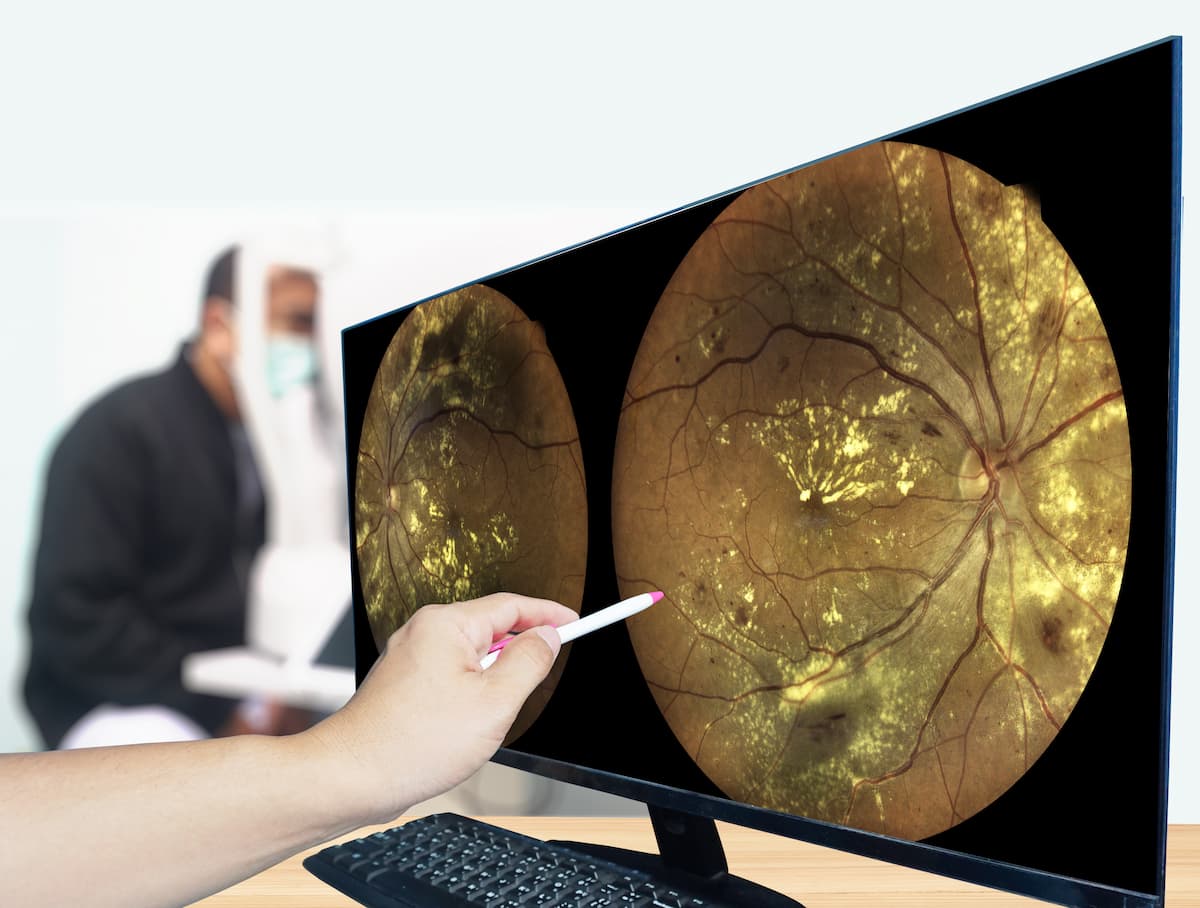Article
Public release of AI to estimate biological age from fundus images
Author(s):
The technology could prove to be the foundation for establishing a new biomarker of ocular diseases.
Artificial intelligence can predict a person's age, gender, smoking status, and blood glucose status from a retinal image. (Image Credit: AdobeStock)

The Japanese Ophthalmological Society and the National Institute of Informatics have developed and public-released an AI model to estimate an individual's age from fundus images, using data collected by the Japan Ocular Imaging Registry (JOIR), a national ophthalmological database established with support from the Japanese Agency for Medical and Health Sciences (AMED).
According to a Resource Organization of Information and Systems (ROIS) news release, it is expected that researchers will apply this AI model in the future research, which will lead to the development of new biomarkers related to the susceptibility to eye diseases.
Background
ROIS noted in its news release deep learning has emerged as a significant breakthrough in machine learning and is widely used in artificial intelligence (AI), particularly in image recognition. Numerous reports suggest that the accuracy of image recognition has surpassed that of humans.
In 2017, the National Institute of Informatics (NII) established the Research Center for Medical Bigdata to develop medical assistance AI and created a database of medical image big data. NII also developed and operates an integrated cloud environment (cloud infrastructure) to conduct research and development on medical support AI.
In 2019, the Japan Ophthalmological Society established the General Incorporated Association Japan Ocular Imaging Registry (JOI Registry or JOIR) to collect various ophthalmic data from ophthalmology-related facilities nationwide, aiming to promote and support research and development of medical assistance AI. The collected ophthalmic images in the JOIR database are anonymized and sent to NII's cloud infrastructure to develop medical support AI using available computing resources on the cloud infrastructure.
According to the release, age has a significant impact on the onset of various diseases such as cancer, lifestyle diseases, and dementia. Recently, AI development using medical images has advanced rapidly, and it has become evident that AI can estimate the condition of an individual based on medical images.
For instance, AI can predict a person's age, gender, smoking status, and blood glucose status from a retinal image. The information obtained from these images has the potential to be used not only for ophthalmology but also for medical research on various systemic diseases. However, AI developed in previous reports has not been made public, which limits its use in other research, according to the release.
To address this issue, the Japan Ophthalmological Society collaborated with NII to develop an AI model that estimates a person's age based on fundus images, and this model is now publicly available free of charge for researchers to use.
Research and Development
ROIS noted in the release the developed model used 8,149 retinal photographs of healthy individuals between the ages of 18 and 84 as training data for deep learning, with the biological age serving as the ground truth. The average absolute error between the estimated age and the biological age was 2.39 years. The "Retinal Age Estimation Model" created in this study has been made available free of charge to researchers in the fields of medicine and informatics, as it was evaluated to have a certain degree of correlation with the biological age.
Moreover, according to the release, the classical epidemiological studies have demonstrated, without using AI, that the information obtained from retinal images can be used to estimate the risk of cardiovascular diseases and cognitive disorders. The medical value of the age estimated from retinal images is currently unclear, but it is believed that this achievement could become a new biomarker related to the likelihood of developing diseases if researchers utilize it for disease control and epidemiological studies.
Newsletter
Don’t miss out—get Ophthalmology Times updates on the latest clinical advancements and expert interviews, straight to your inbox.





